
6 min read
Designing for Growth: How Thoughtful Children's Furniture Shapes Development
Discover how thoughtful design fosters creativity, safety and wellbeing, influencing generations and paving the way for a sustainable future.

5 min read
Discover WLLW’s strategies for designing a child’s bedroom that supports their health, wellbeing and development.
In this installment of WLLW’s ‘How To’ series we take a look at children’s bedroom design, a sanctuary that should be carefully considered in the overall design of the home. A child's bedroom is a critical space for their overall development and wellbeing, serving as a space they can feel safe, explore their creativity and build a sense of identity. This room isn't just for sleep; it is often a multifunctional area where children play, learn and socialize.
A well-designed bedroom can significantly impact a child’s emotional and mental health by providing a comforting environment. Incorporating flexible furniture allows the space to adapt to evolving needs, promoting both practicality and sustainability throughout childhood. Decorating the room with furniture, objects and colors that reflect the child’s interests and personality, rather than simply their parents’ taste, is crucial. This personalized touch not only fosters a sense of ownership and self-expression but also ensures the room is a nurturing, comforting space that resonates with who they are.

A tidy and organized space can have profound psychological benefits for children. A clutter-free environment helps reduce anxiety by creating a sense of order and calm, which is particularly important in a space where children rest and recharge. Additionally, an organized room can boost creativity and productivity, allowing children to focus better on their activities. This sense of order makes the space more pleasant and teaches children valuable skills in maintaining their own environment.
Accessible shelving, installed at a height that children can reach, encourages them to take responsibility for organizing their belongings. Clear labels on boxes and bins can also make it easier for children to find and put away their things. These strategies not only help maintain a tidy room but also empower children to take an active role in managing their own space.
Lighting plays an important role in regulating a child’s circadian rhythms, which are essential for maintaining healthy sleep patterns and are more sensitive to light than adults’. Exposure to natural light during the day helps synchronize the body's internal clock, promoting alertness and energy. Natural light is especially beneficial in the morning, as it signals to the brain that it's time to wake up and be active.
In the evening, it's important to transition to warmer, dimmer lighting to signal to the body that it's time to wind down. Warm light, which mimics the natural sunset, can help stimulate the production of melatonin, the hormone responsible for inducing sleep. Avoiding blue light in the evening can prevent disruptions to this natural process, thereby supporting a child’s ability to fall asleep more easily. Blackout curtains or shades help block out external light sources, such as streetlights or early morning sunlight, creating a dark environment conducive to sleep.

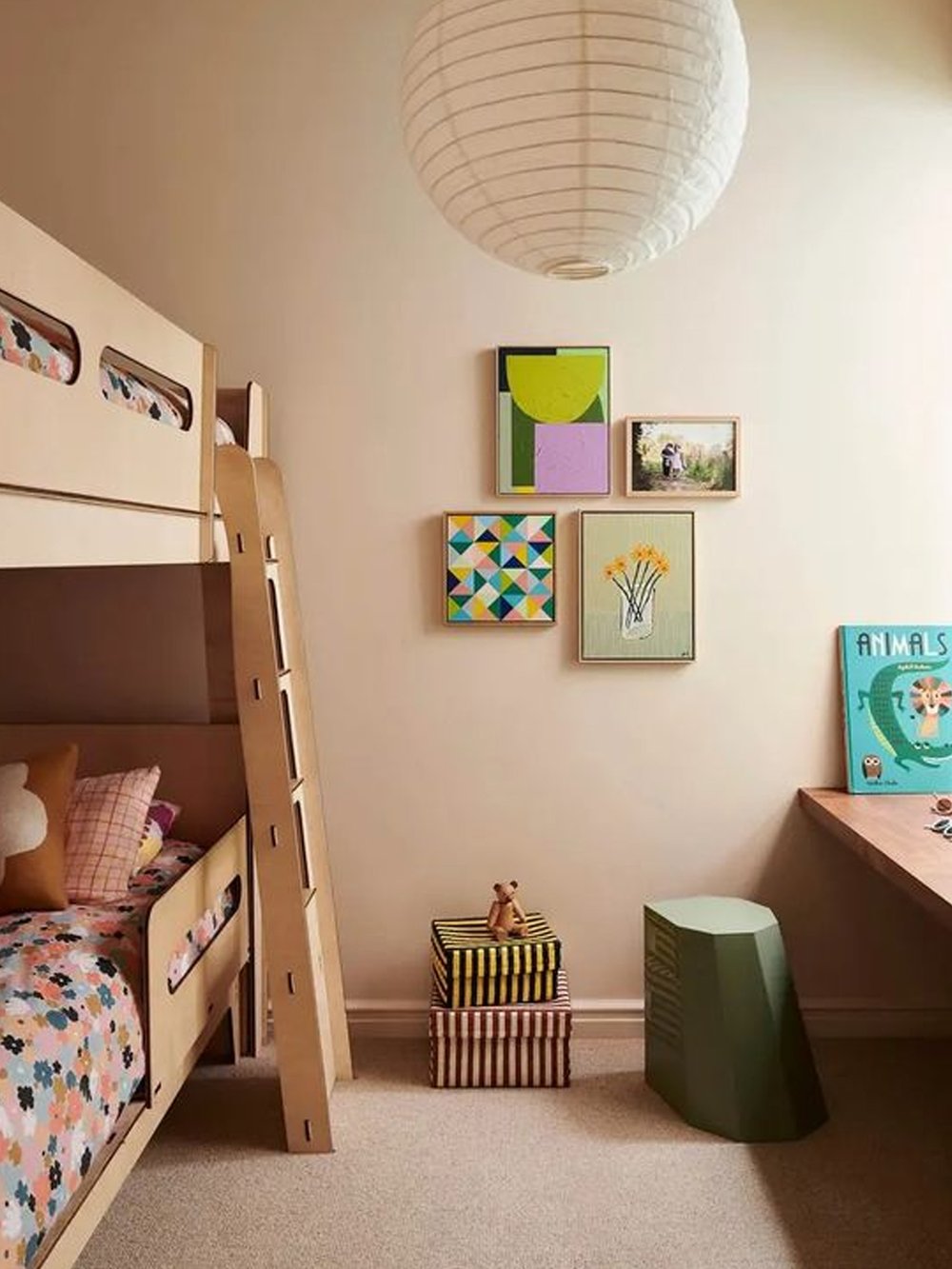
Excessive noise can disrupt concentration and disturb sleep. Carpets and rugs can dampen noise from the floor. Consider using thick curtains or drapes to block out external sounds and add an extra layer of insulation. Sealing gaps around doors and windows with weatherstripping or door sweeps can further reduce external noise intrusion. Strategically placing furniture, such as bookshelves, against walls can also help absorb sound.
Additionally, a white noise machine can mask disruptive background noises with a consistent, soothing sound, creating a more peaceful environment conducive to both sleep and focused activities.
The ideal temperature range for comfort and healthy sleep in a child’s room typically falls between 68-72°F. A range that is neither too hot nor too cold, supporting the body's natural sleep processes. Maintaining proper humidity levels is equally important, as it helps prevent issues such as respiratory problems. The optimal indoor humidity level is generally between 40-60 percent. In dry conditions, using a humidifier can add moisture to the air, alleviating respiratory irritation, while in more humid environments, a dehumidifier can help prevent mold growth and reduce allergens.
Ensuring good air ventilation by regularly opening windows when weather permits can allow fresh air to circulate and remove indoor pollutants. In addition, using air purifiers can help filter out dust, pollen, and other airborne particles, improving indoor air quality. Properly maintained HVAC systems with clean filters also play a key role in maintaining good ventilation and air quality.


The blue light emitted by screens can interfere with the production of melatonin, the hormone that regulates sleep-wake cycles, making it harder for children to fall asleep. Reducing screen time before bed can help ensure that children get the necessary amount of sleep for their development, learning and emotional health.
To support healthy screen habits, it's helpful to establish a routine that includes turning off all screens at least an hour before bedtime. This allows time for unwinding with calming activities like reading, drawing or other non-screen-based hobbies.
Many traditional materials and finishes contain harmful chemicals that can off-gas into the air, potentially impacting a child’s health. By selecting products made from non-toxic materials, such as organic cotton, solid wood or low-VOC paints and finishes, parents can reduce exposure to harmful substances and promote a healthier living space.
Flame retardants, commonly used in furniture and certain toys, have been linked to various health issues, including hormonal disruptions and developmental delays. These chemicals can off-gas into the air and accumulate in household dust, increasing exposure risk. Instead, choose items made from naturally flame-resistant materials, such as wool, coir or jute.

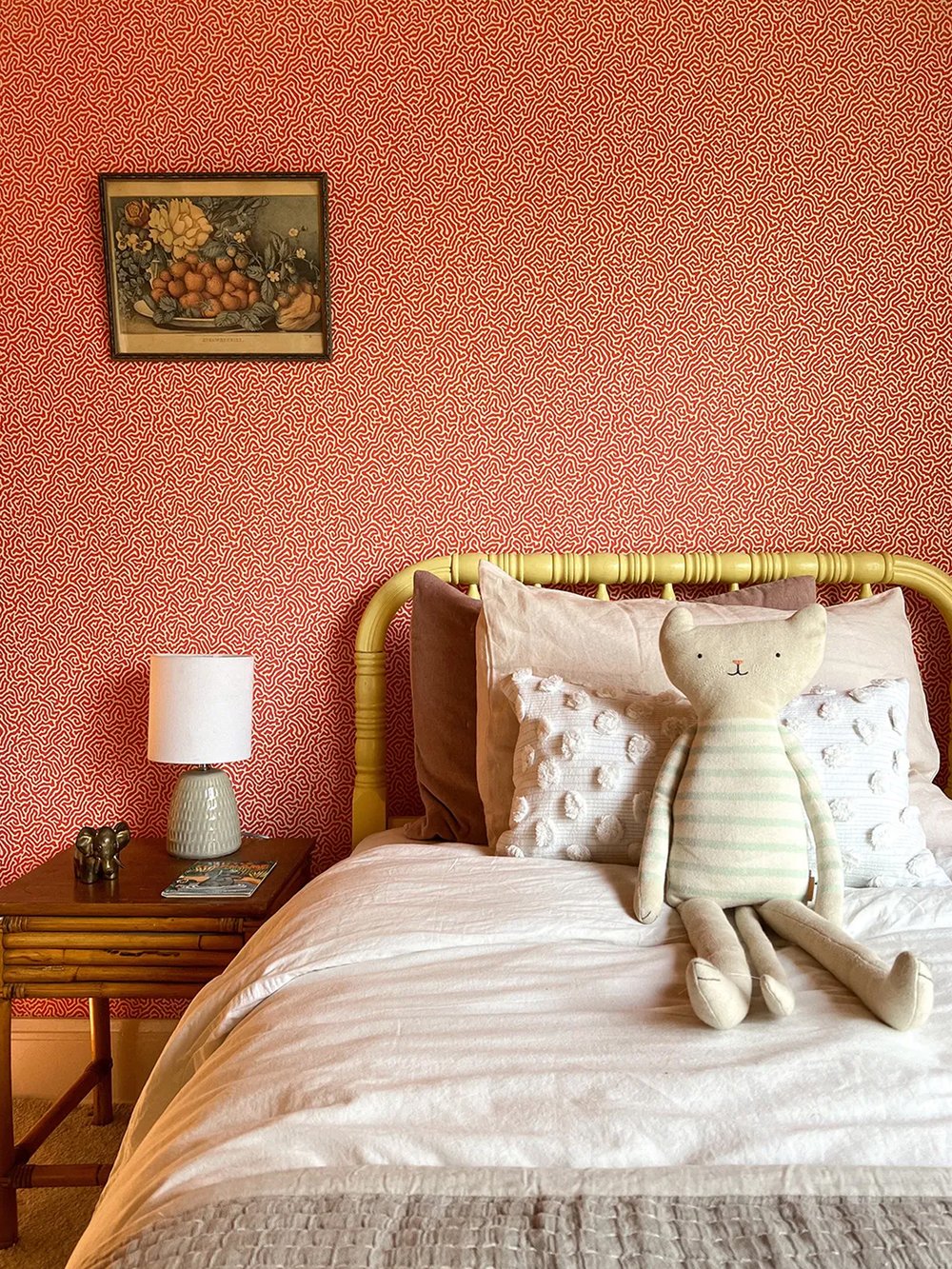
For mattresses and bedding, hypoallergenic materials like organic cotton, natural latex or tencel can help reduce the risk of respiratory issues, skin irritations and other allergic conditions in the bedroom.
Organic fabrics, which are free from harmful chemicals and pesticides, provide a clean and sustainable option, reducing the risk of exposure to toxic substances that can off-gas into the air. These materials also tend to be softer and more breathable, contributing to a more restful and uninterrupted sleep. Seek out OEKO-TEX Standard 100 and GOTS certifications when selecting textiles for bed linen.
Essential childproofing measures for younger children include securing heavy furniture to the wall to prevent tipping, covering electrical outlets with safety plugs and using corner protectors on sharp furniture edges. Additionally, installing safety gates can prevent access to potentially hazardous areas, while using drawer and cabinet locks can keep dangerous items out of reach.
As children grow older, transitioning to ergonomic furniture becomes important to support their developing bodies. Ergonomic furniture is designed to promote proper posture and comfort, which is essential for older children who spend significant time studying or engaging in other activities at their desks. Features such as adjustable chairs and desks, lumbar support and proper desk height can help prevent back, neck and wrist strain.


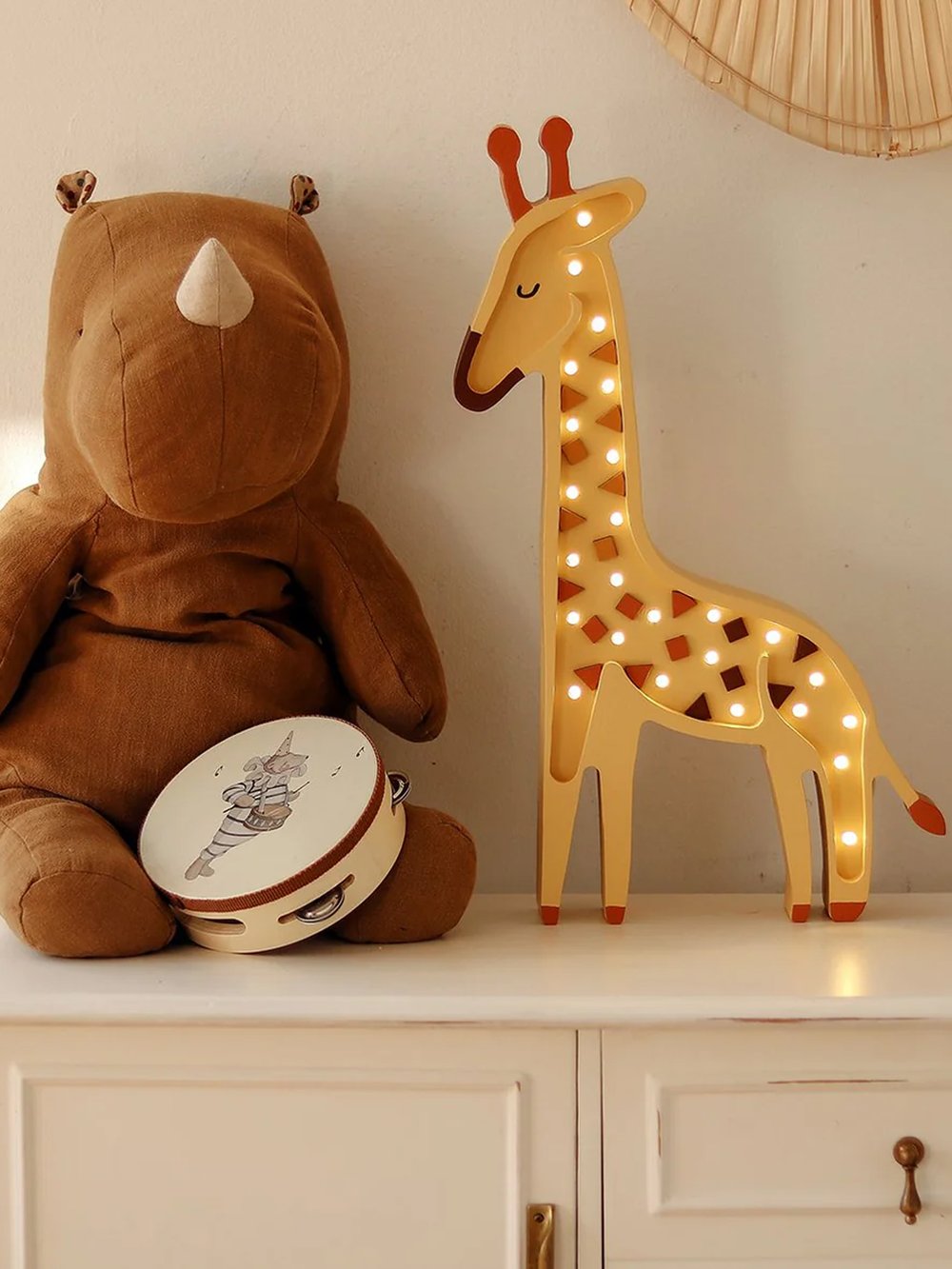
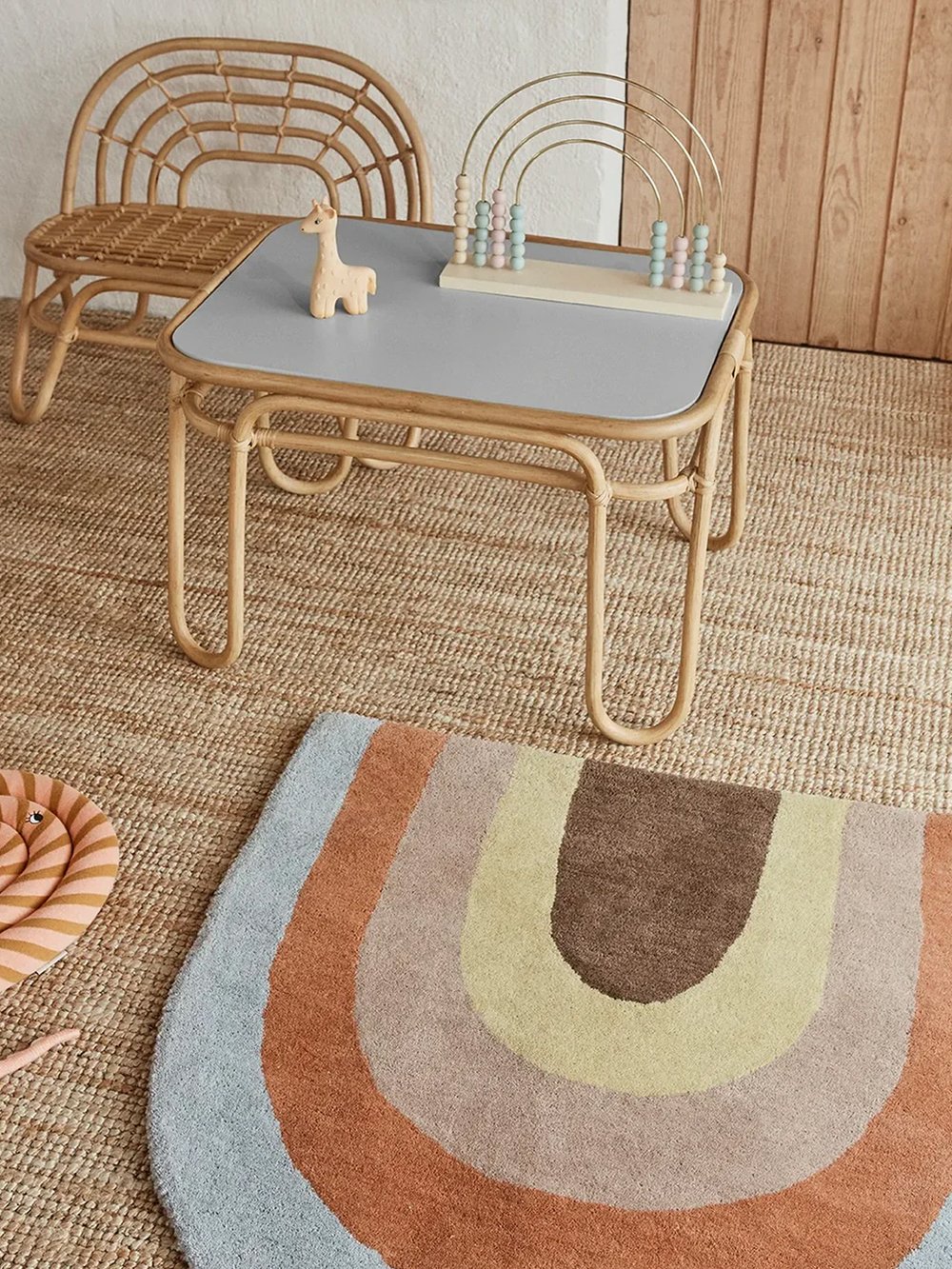
Photography: Leo Davut, Note Design Studio, Oeuf NYC, Eve Wilson, Yoshihiro Asada, Thomas de Bruyne, Lauren Heanes, Carl Hansen, Kalon Studios, Odin Parker

6 min read
Discover how thoughtful design fosters creativity, safety and wellbeing, influencing generations and paving the way for a sustainable future.
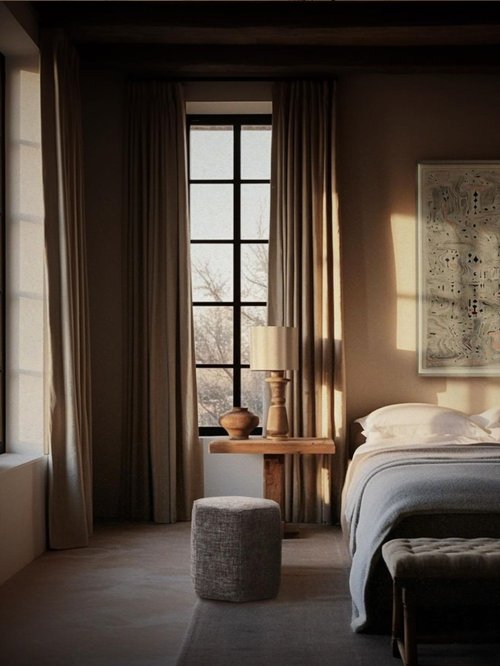
4 min read
Discover WLLW's strategies to design a bedroom that supports restorative sleep and overall physical and mental wellbeing.